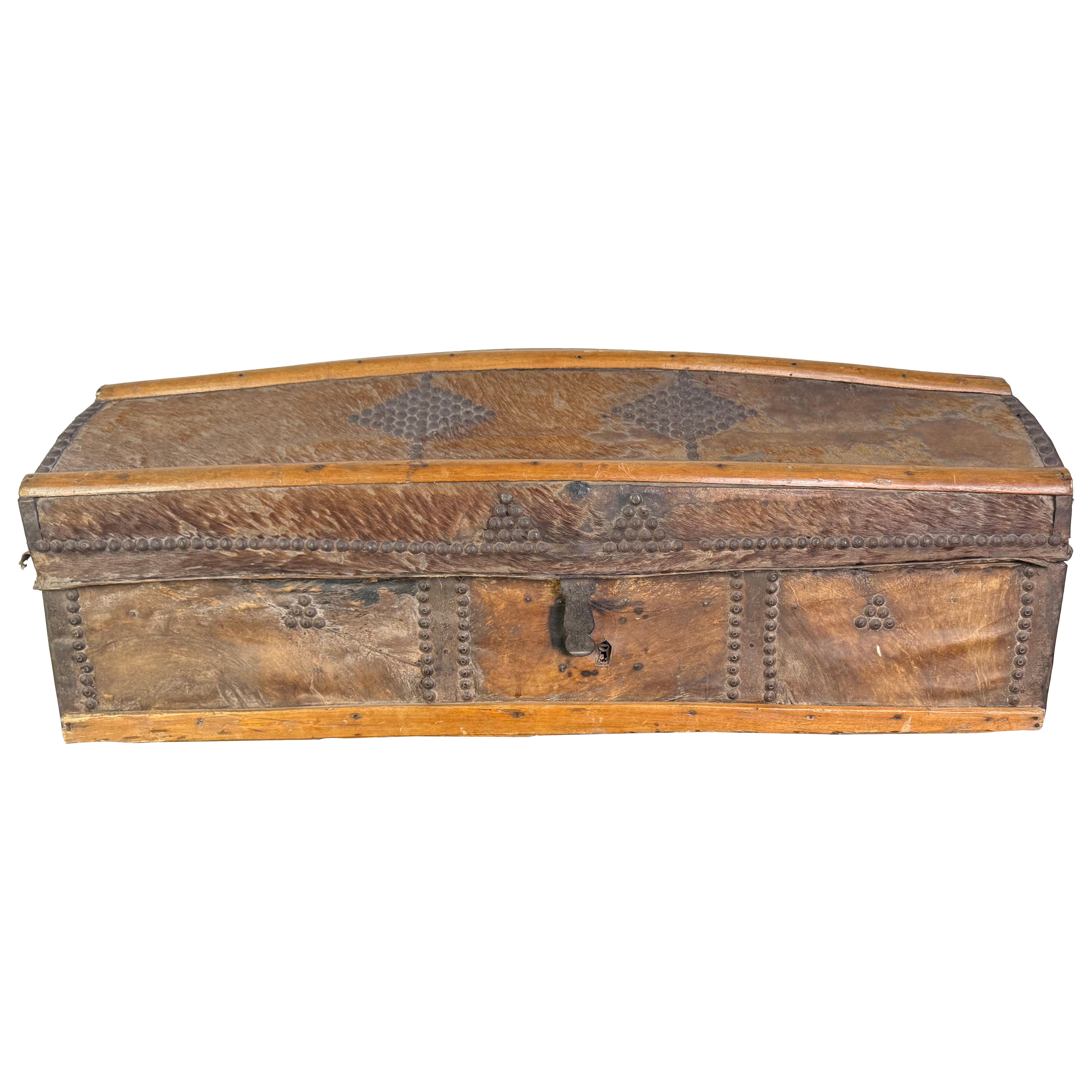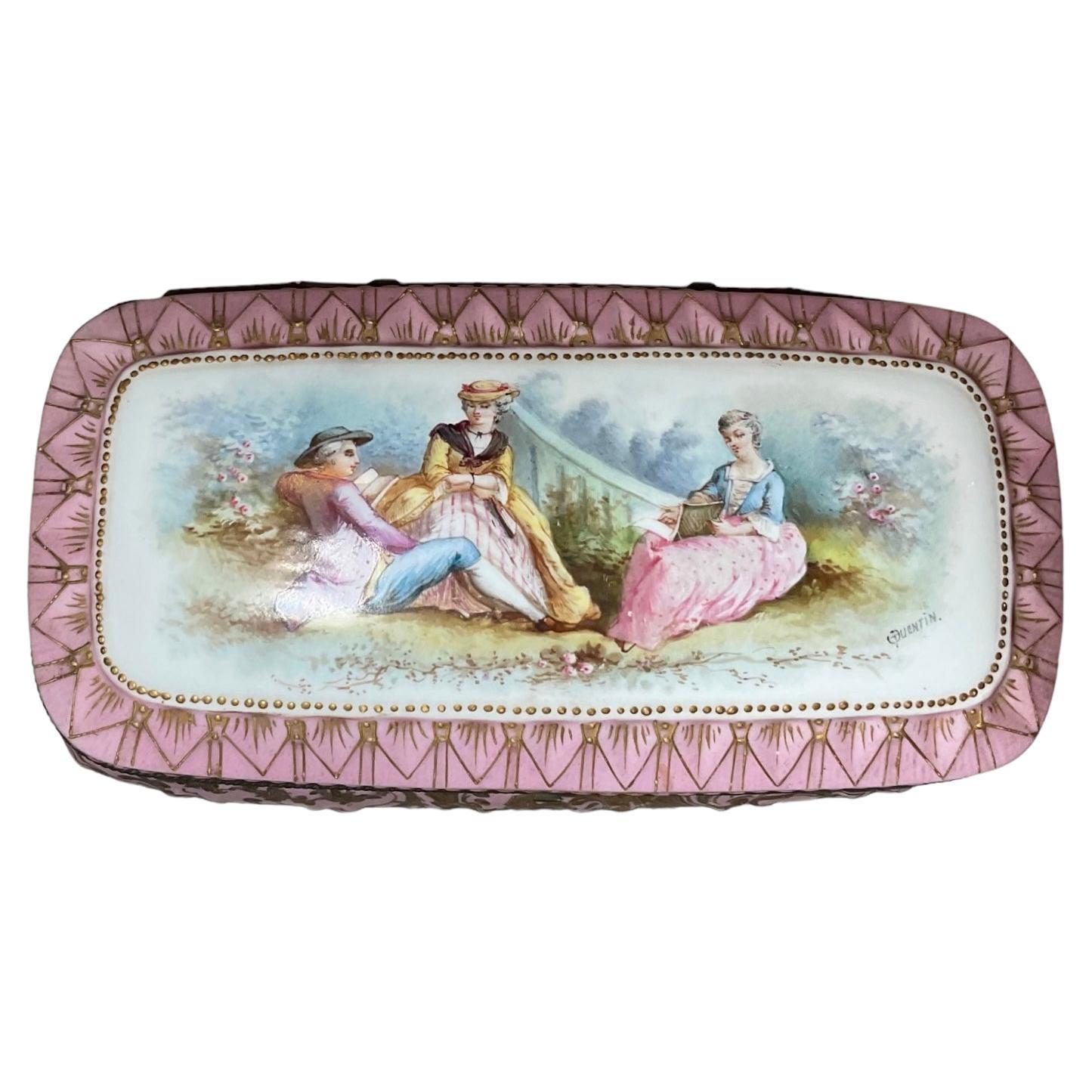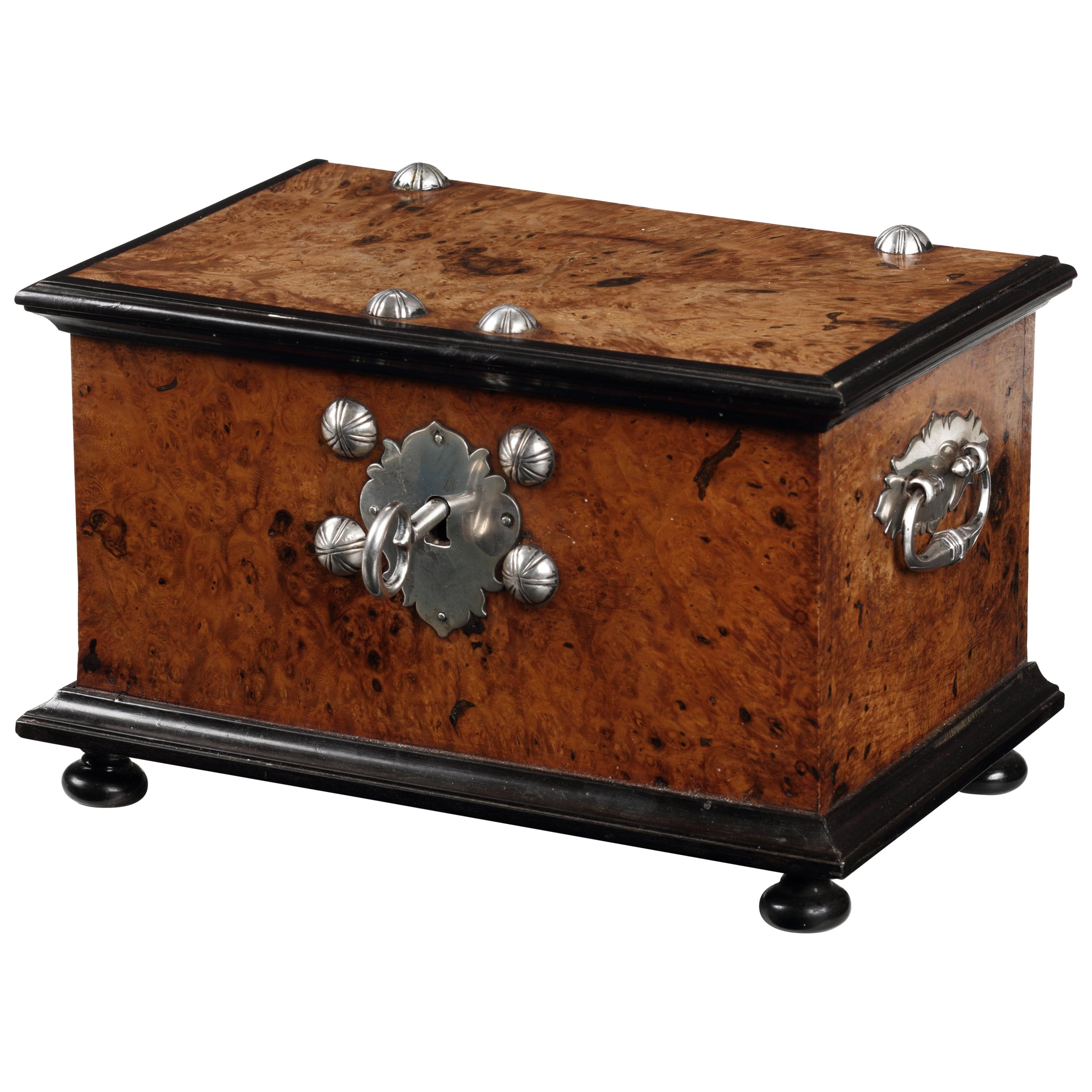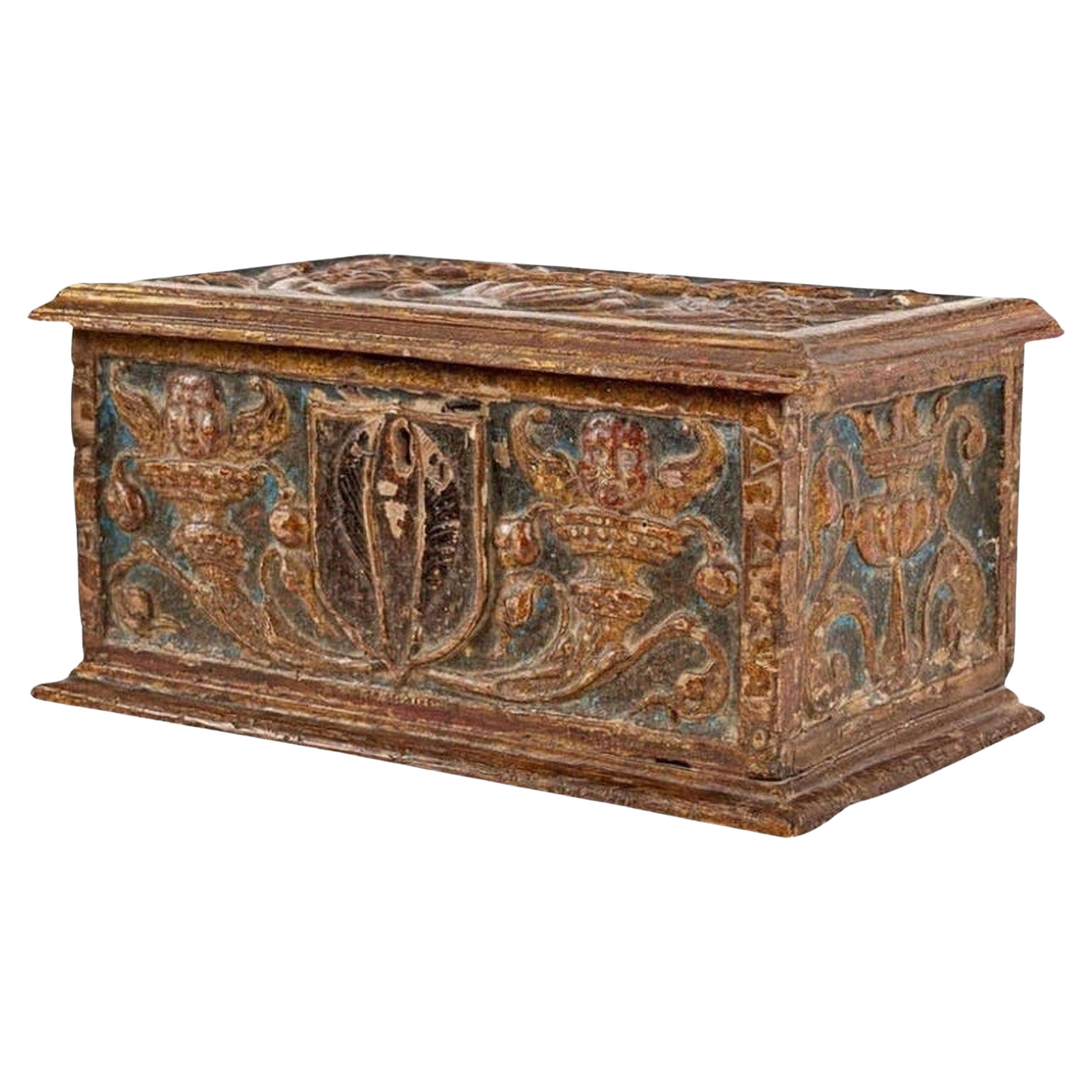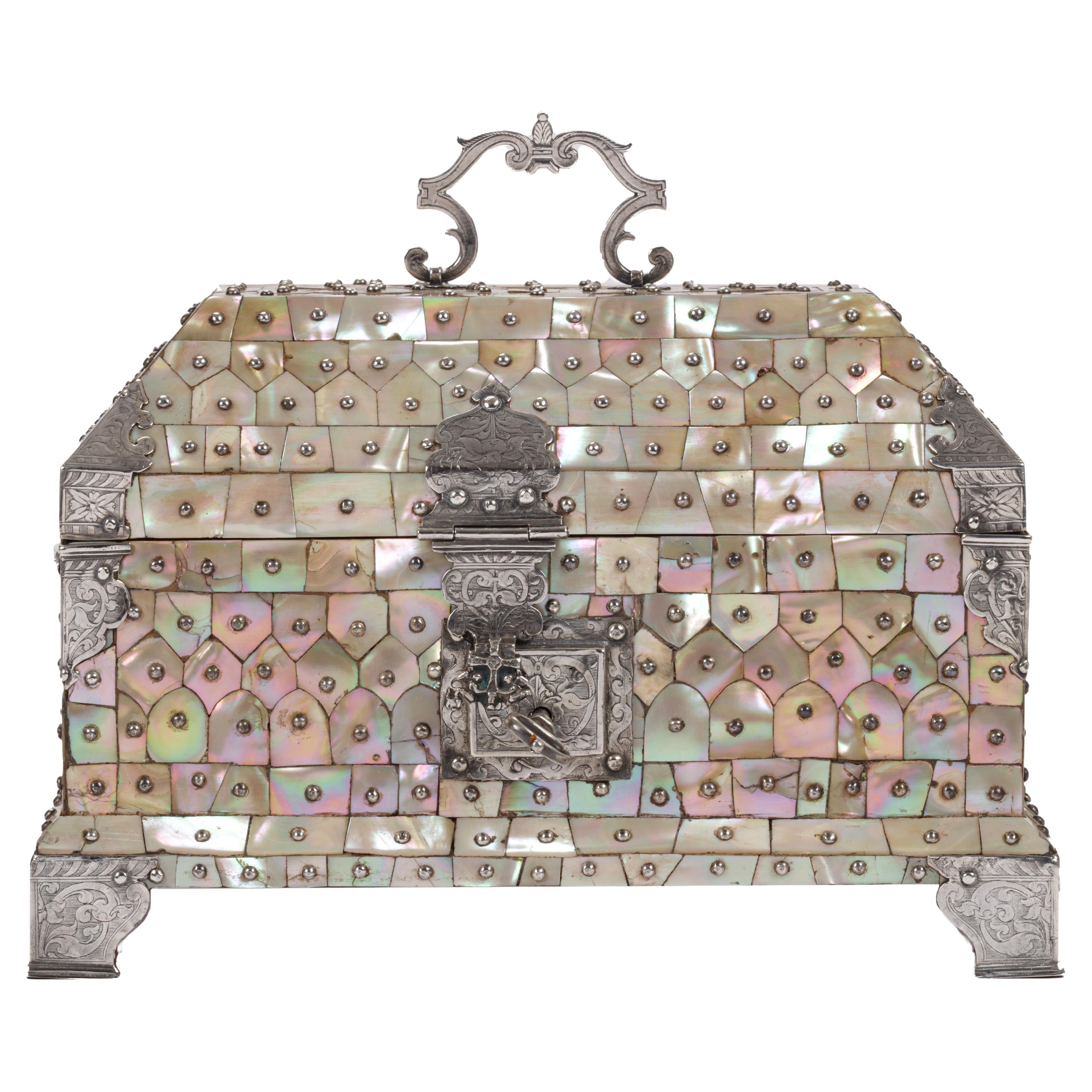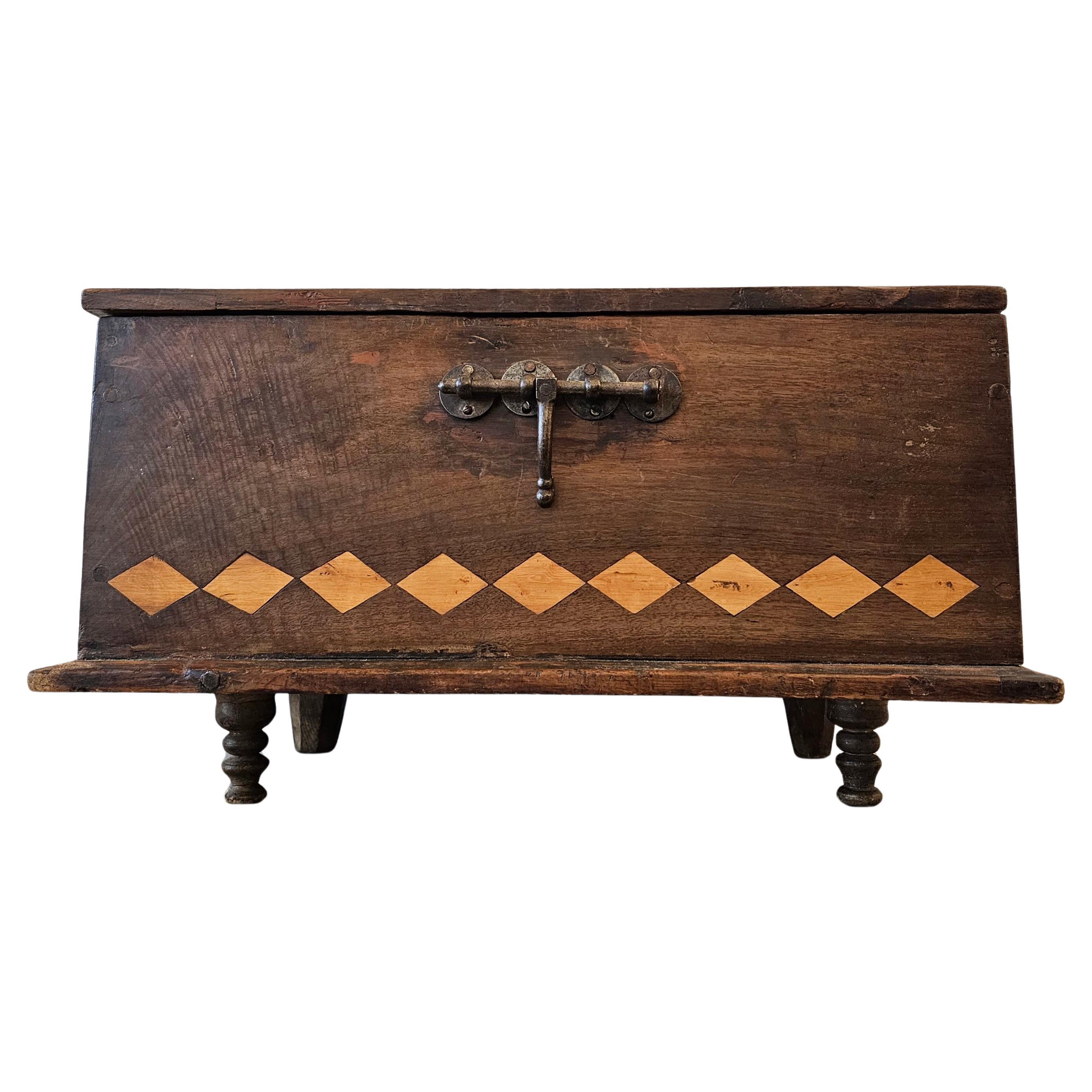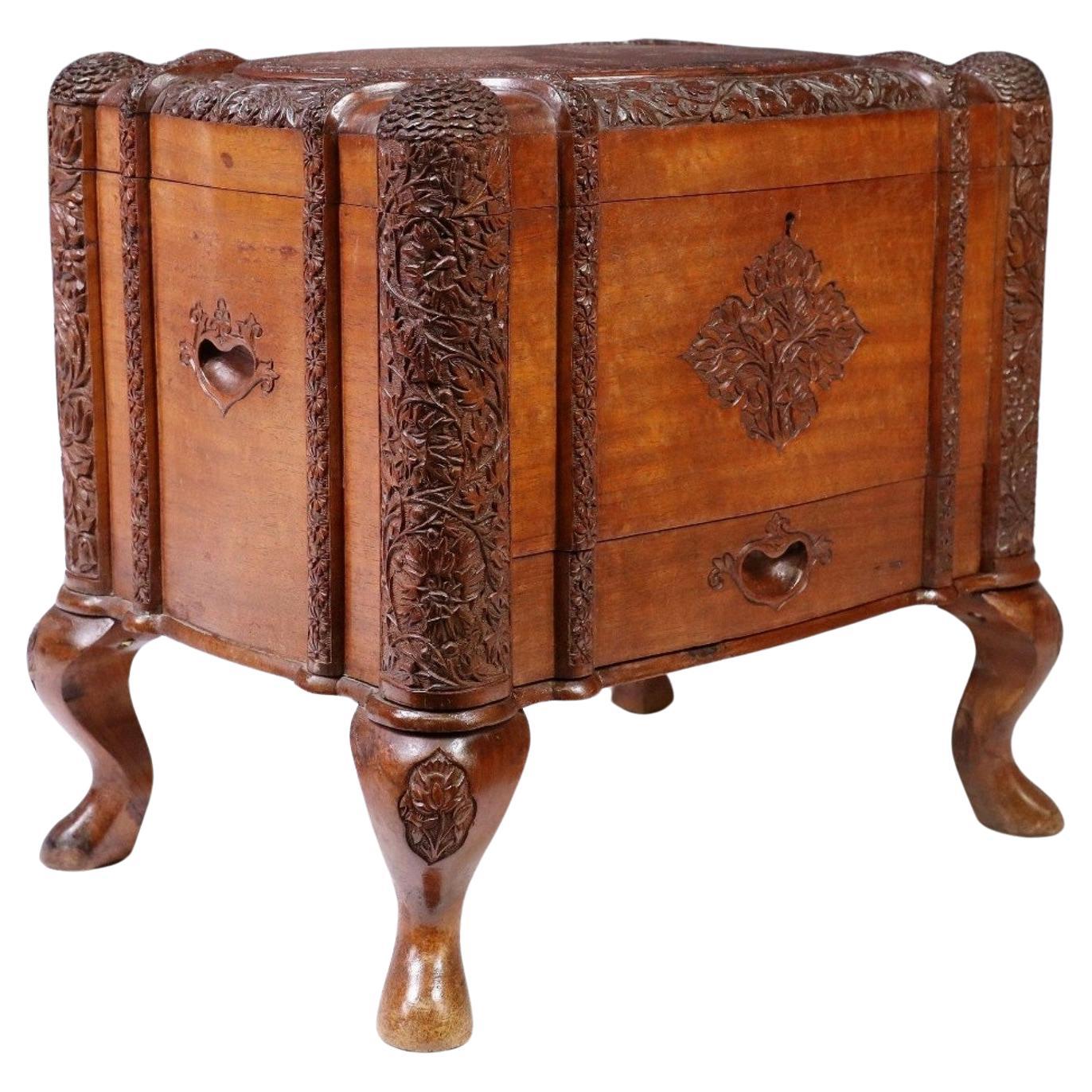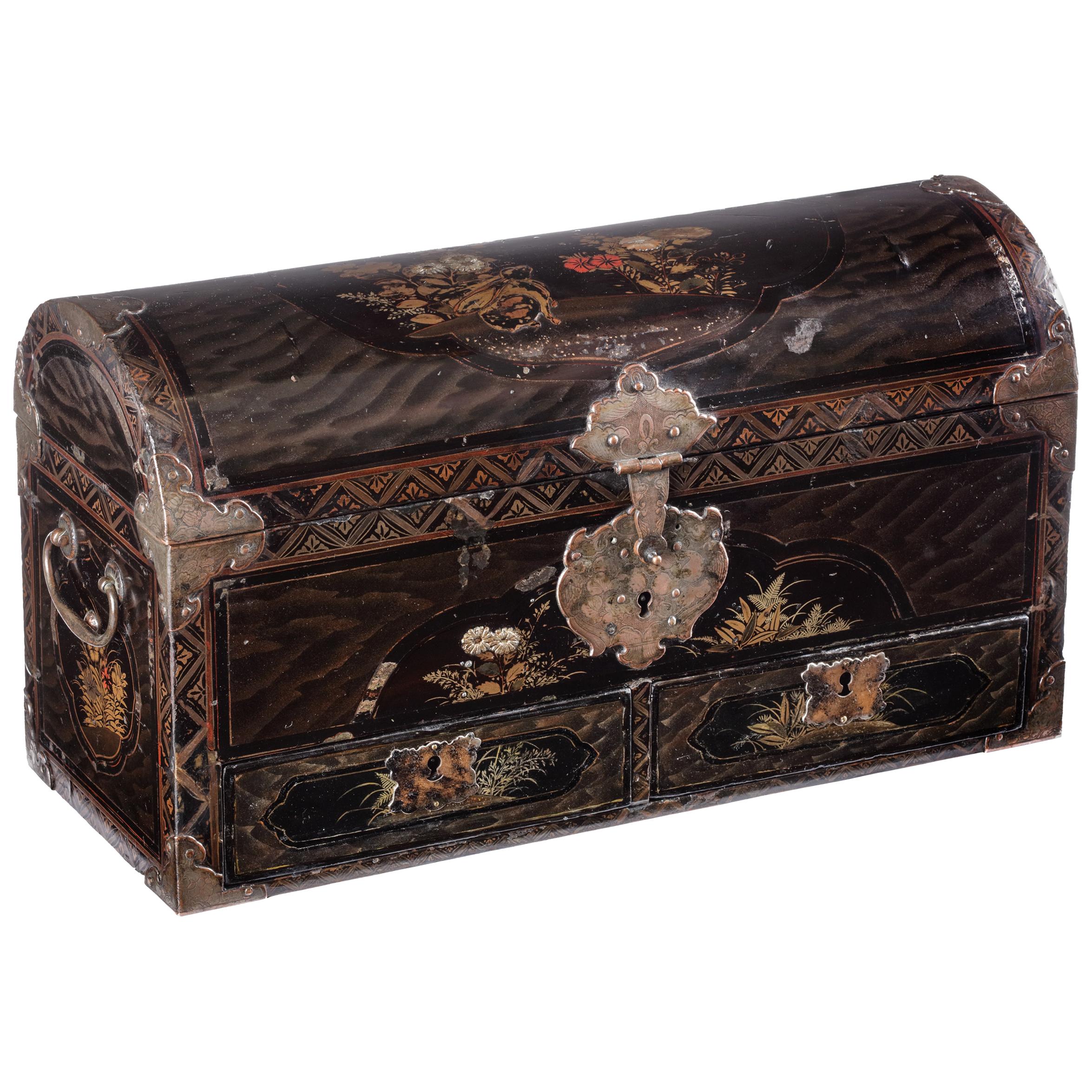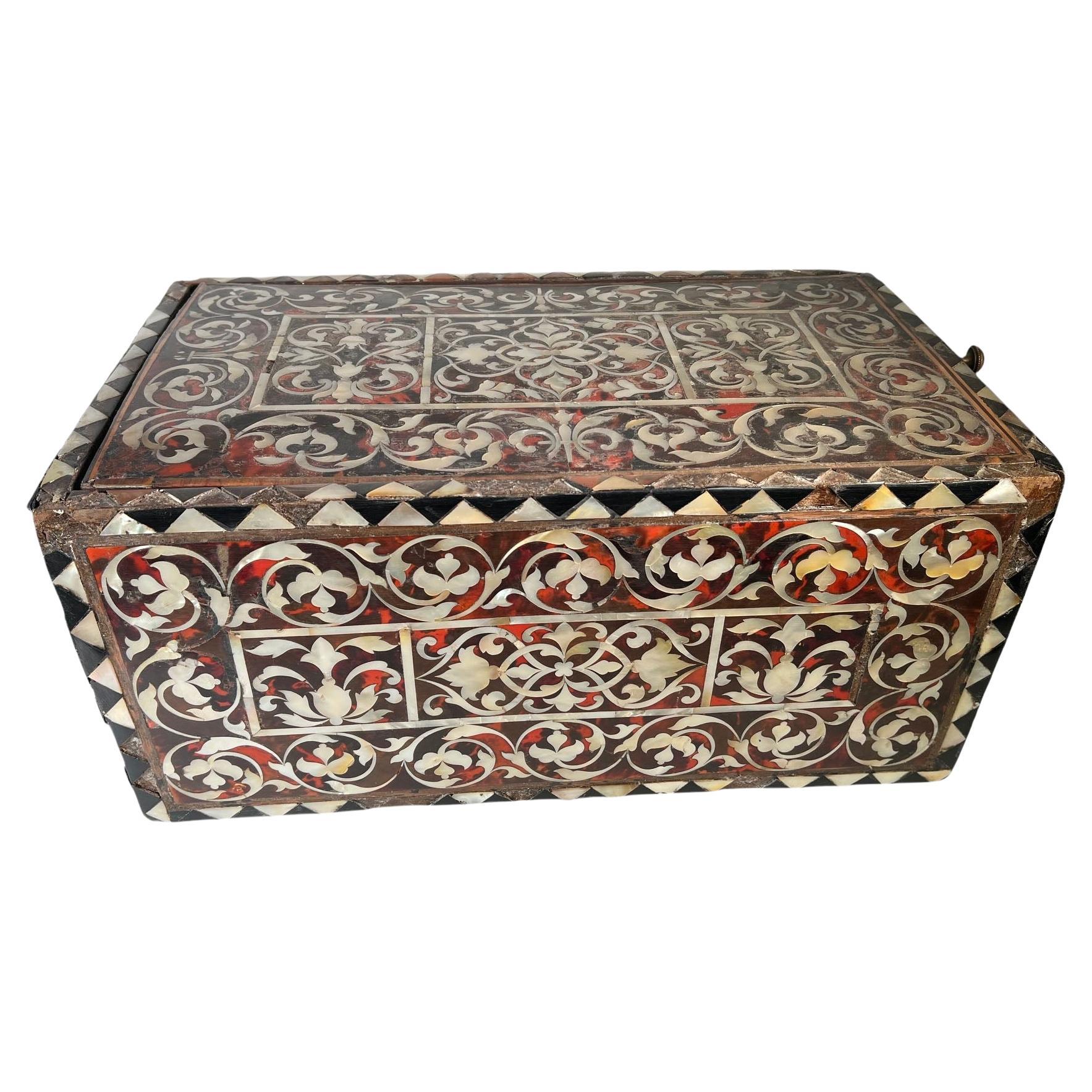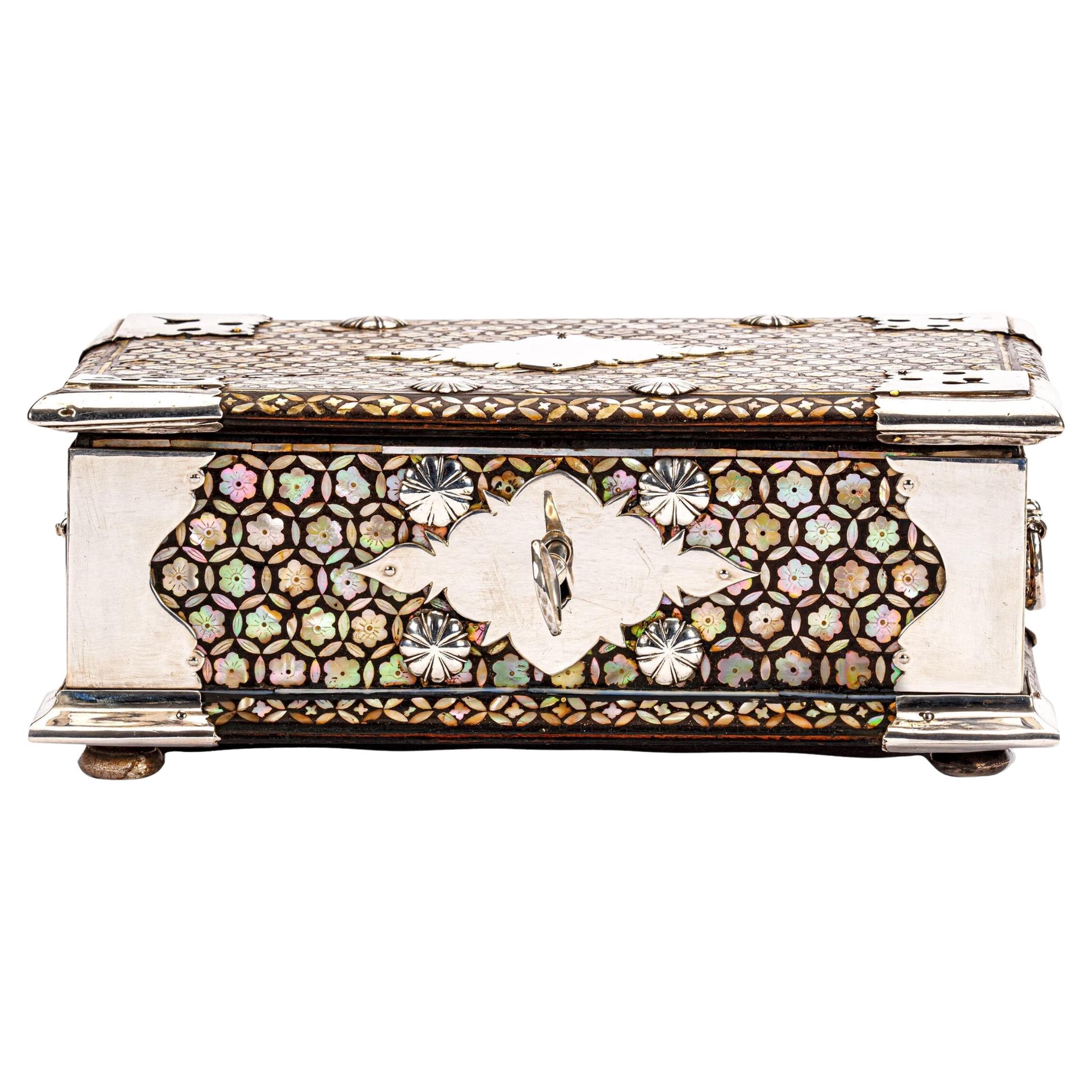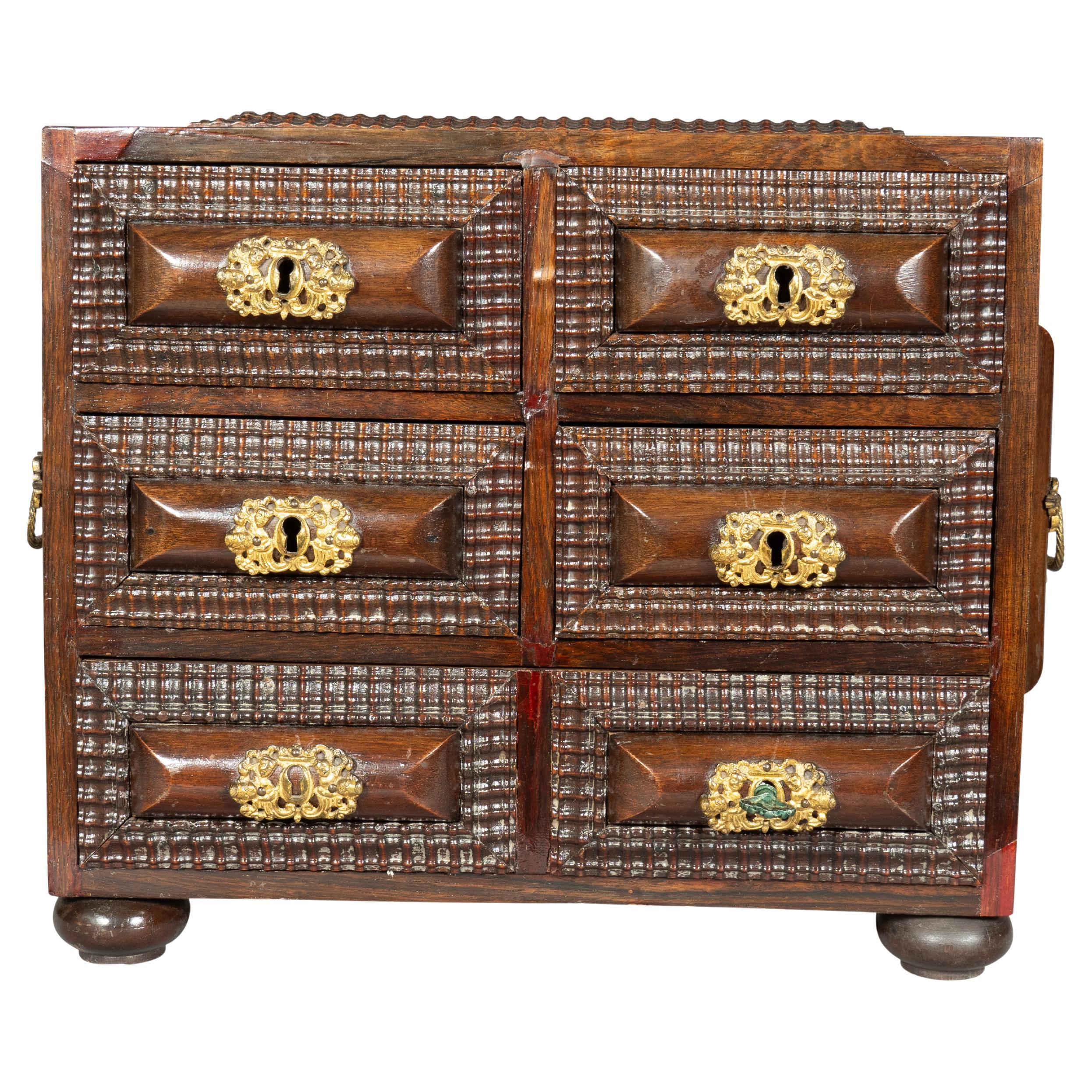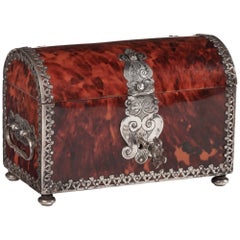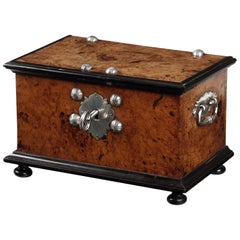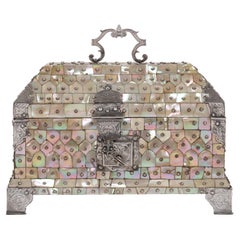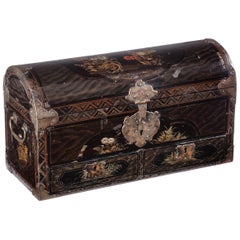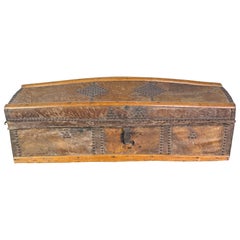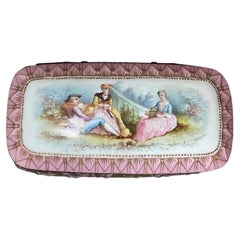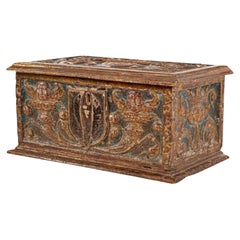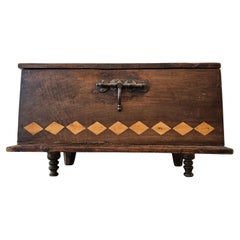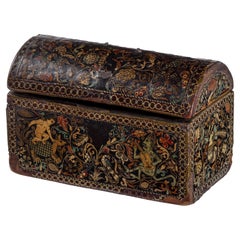
Spanish Colonial Barniz De Pasto Lacquer Casket, Colombia, 1625-1650
View Similar Items
Want more images or videos?
Request additional images or videos from the seller
1 of 8
Spanish Colonial Barniz De Pasto Lacquer Casket, Colombia, 1625-1650
$45,060.18List Price
About the Item
- Dimensions:Height: 3.31 in (8.4 cm)Width: 5.24 in (13.3 cm)Depth: 2.72 in (6.9 cm)
- Style:Spanish Colonial (Of the Period)
- Materials and Techniques:
- Place of Origin:
- Period:Mid-17th Century
- Date of Manufacture:1625-1650
- Condition:Wear consistent with age and use. Minor losses. In original condition, part of the silver mounts missing, damages overall. Relic of time.
- Seller Location:Amsterdam, NL
- Reference Number:1stDibs: LU5458226431172
About the Seller
5.0
Recognized Seller
These prestigious sellers are industry leaders and represent the highest echelon for item quality and design.
Established in 1985
1stDibs seller since 2020
23 sales on 1stDibs
Typical response time: 5 hours
Authenticity Guarantee
In the unlikely event there’s an issue with an item’s authenticity, contact us within 1 year for a full refund. DetailsMoney-Back Guarantee
If your item is not as described, is damaged in transit, or does not arrive, contact us within 7 days for a full refund. Details24-Hour Cancellation
You have a 24-hour grace period in which to reconsider your purchase, with no questions asked.Vetted Professional Sellers
Our world-class sellers must adhere to strict standards for service and quality, maintaining the integrity of our listings.Price-Match Guarantee
If you find that a seller listed the same item for a lower price elsewhere, we’ll match it.Trusted Global Delivery
Our best-in-class carrier network provides specialized shipping options worldwide, including custom delivery.More From This Seller
View AllAn Indo-Portuguese colonial tortoiseshell veneered wooden casket
Located in Amsterdam, NL
India, probably made in Gujarat for Portuguese Goa, late 17th/early 18th century
The tortoiseshell laid over gold foil, and the interior with red lacquer and possibly later added re...
Category
Antique Late 17th Century Indian Jewelry Boxes
Materials
Silver
Fine Dutch Colonial Indonesian Casket with Silver Mounts, circa 1706
Located in Amsterdam, NL
A fine Indonesian Ambonya burl, ebony and teak casket with silver mounts
Jakarta (Batavia), circa 1706 (year letter W (1705-1710), marked DV, probably Dirck Vooght
The outer ri...
Category
Antique Early 18th Century Indonesian Dutch Colonial Decorative Boxes
Materials
Sterling Silver
16th-Century Indo-Portuguese Colonial Mother-of-pearl Gujarat Casket
Located in Amsterdam, NL
An exceptional Indo-Portuguese colonial mother-of-pearl veneered casket with silver mounts
India, Gujarat, 2nd half of the 16th century, the silver mounts Goa or probably Lisbon
Measures: H. 16 x W. 24.6 x D. 16.1 cm
An exceptional Gujarati casket with a rectangular box and truncated pyramidal lid (with slopes on each side and a flat top) made from exotic wood, probably teak (Tectona grandis), covered with a mother-of-pearl mosaic. The tesserae, cut from the shell of the green turban sea snail (Turbo marmoratus, a marine gastropod) in the shape of fish scales, are pinned to the wooden structure with silver ball-headed nails. The casket is set on bracket feet on the corners. The masterfully engraved decoration of the silver mounts follows the most refined and erudite Mannerist repertoire of rinceaux and ferroneries dating from the mid-16th century. The high quality and refinement of the silver mounts and, likewise, the silver nails that replaced the original brass pins used to hold the mother-of-pearl tesserae in place indicate the work of a silversmith probably working in Lisbon in the second half of the 16th century.
The Indian origin of this production, namely from Cambay (Khambhat) and Surat in the present state of Gujarat in north India, is, as for the last three decades, consensual and fully demonstrated, not only by documentary and literary evidence - such as descriptions, travelogues and contemporary archival documentation - but also by the survival in situ of 16th-century wooden structures covered in mother-of-pearl tesserae. A fine example is a canopy decorating the tomb (dargah) of the Sufi saint, Sheik Salim Chisti (1478-1572) in Fatehpur Sikri in Agra district in the state of Uttar Pradesh, north India. This is an artistic production, geometric in character and Islamic in nature, where usually the mother-of-pearl tesserae form complex designs of fish scales or, similar to the dishes also made using the same technique, with the thin brass sheets and pins, stylized lotus flowers. The truncated pyramidal shape corresponds, like their contemporary tortoiseshell counterparts also made in Gujarat, to a piece of furniture used in the Indian subcontinent within the Islamic world prior to the arrival of the first Portuguese. This shape, in fact, is very old and peculiar to East-Asian caskets, chests or boxes used to contain and protect Buddhist texts, the sutras.
A similar chest is the famous and large reliquary chest from Lisbon cathedral that once contained the relics of the city's patron saint, Saint Vincent. Both match in shape, having the same kind of socle or pedestal and bracket feet, and in their engraved silver mountings, featuring the same type of refined, erudite decoration. Their differences lie in the silver borders that frame the entire length of the edges of the chest (both the box and the lid), pinned with silver nails, and on the lock plate, shaped like a coat of arms in the Lisbon example. Given the exceptional dimensions of the reliquary casket...
Category
Antique 16th Century Indian Jewelry Boxes
Materials
Silver
Fine Japanese Namban Lacquer Jewelry Casket, 17th Century
Located in Amsterdam, NL
Japanese Namban lacquer transition-style coffer with two drawers
Kyoto/Nagasaki, circa 1650
The cartouches with gilt and red decorations of leaves...
Category
Antique 17th Century Japanese Edo Lacquer
Materials
Cypress
18th-century Dutch-colonial Peranakan mother-of-pearl casket with silver mounts
Located in Amsterdam, NL
An Indonesian Peranakan mother-of-pearl inlaid mastic sirih casket with silver mounts
Jakarta (Batavia), circa 1720-1730, the silver hinges marked for Batavia, maker’s mark HS or SH...
Category
Antique Mid-18th Century Indonesian Dutch Colonial Antiquities
Materials
Silver
Japanese Colonial Nagsaki Lacquer Box with Depiction of Amsterdam, 1830-1840
Located in Amsterdam, NL
An important Japanese lacquer box with a view of The 'Nieuwe Stadsherberg Van Amsterdam
Nagasaki, Edo-period, 1830-1840
The black lacquered wood box, decorated in gold and inla...
Category
Antique Early 19th Century Japanese Decorative Boxes
Materials
Mother-of-Pearl, Wood
$29,644 / item
Free Shipping
You May Also Like
19th Century Spanish Colonial Leather Dome Trunk with Studded Decoration
Located in Los Angeles, CA
A rare and character-filled Spanish Colonial dome-top trunk, late 19th century, clad in original hair-on cowhide with geometric patterns formed from decorative metal studs. The rich,...
Category
Antique Mid-19th Century Spanish Spanish Colonial Decorative Boxes
Materials
Iron
Chateau De Tuileries Porcelain Rectangular Casket
By Chateau des Tuileries
Located in Guaynabo, PR
This is a Chateau de Tuileries hand painted porcelain rectangular casket box. It depicts a pastoral scene of a young couple and their chaperone over it’s hinged lid. The scene is fra...
Category
Antique 19th Century French Rococo Decorative Boxes
Materials
Porcelain
$2,240 Sale Price
20% Off
Spanish Renaissance Casket of the 16th Century
Located in Madrid, ES
Spanish Renaissance casket,
16th century
In carved, polychrome and gilded wood decorated with a vase with horns of plenty, heads of cherubs and fruits.
In the lock a shield with two ...
Category
Antique 16th Century Dutch Baroque Decorative Boxes
Materials
Wood
$4,268 Sale Price
20% Off
Spanish Colonial Era 18th/19th Century Inlaid Cedar Wooden Chest Box Trunk
Located in Forney, TX
A charming scarce Spanish Colonial era parquetry inlaid cedar legged storage chest (large table box / small trunk) with nicely aged warm rich dark patina. circa 1790
Rustic handmade...
Category
Antique 18th Century Spanish Colonial Decorative Boxes
Materials
Iron
Large Antique South Asian Colonial Carved Camphor Wood Table Box Jewelry Casket
Located in Forney, TX
A scarce antique circa 1900 South Asian hand carved wooden decorative table box / jewel casket.
Hand-crafted in the early 20th century, likely British Ceylon (present day Sri Lanka)...
Category
Early 20th Century South Asian Jewelry Boxes
Materials
Wood
Spanish Colonial Tortoiseshell And Mother Of Pearl Box
Located in Dallas, TX
Circa 1750. Tortoiseshell and mother of pearl box with sliding top from Mexico 18th century. Beautiful designs all over. As is condition.
Category
Antique 1750s Mexican Decorative Boxes
Materials
Tortoise Shell, Mother-of-Pearl, Wood
Recently Viewed
View AllMore Ways To Browse
17th Century American Colonial
Spanish Galleon
Antique Silver Spanish Cross
Tropical Monkey
Spanish Silver Lion
17Th Century Casket
Mexican Colonial Silver
17th Century Monkey
Antique Wooden Rabbit
Mexican Monkey
Spanish Colonial Jesus
Colonial Casket
17th Century Spanish Colonial Silver
Barniz De Pasto
Navajo Saddle Blankets
Native American Northwest
Native American Beadwork
Native American Artifacts

